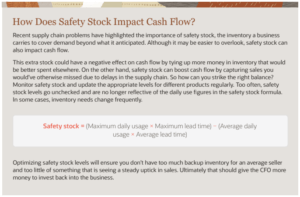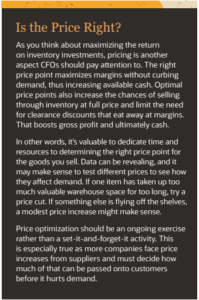With Better Visibility Into the Connection Between Inventory and Financials, CFOs Can Increase Profitability
Any finance professional working at a products-based company knows that, along with investments, inventory represents one of its biggest assets. The problem is that CFOs and controllers often lack a way to easily view and monitor the relationship between inventory and financial data. This prevents them from aligning cash flow with inventory needs to ensure the company has money when it needs it to make smart inventory investments.
That’s especially troublesome as prices rise due to inflation and global supply chain disruptions have made it more difficult to acquire products, making cash flow tighter in a growing number of markets. Purchasing decisions must be intentional and backed by data to ensure the money you do have is put toward materials, supplies and finished goods that will generate strong returns. While inventory is considered an asset, CFOs know all too well that it also represents cash. Each shelf of inventory is essentially a small pile of money, and the longer it sits there, the more those stacks of cash shrink.
The right plan and the right technology can go a long way toward improving inventory decisions in a way that boosts cash flow. Finance chiefs need systems that provide a real-time picture of inventory and financials to create comprehensive, detailed forecasts and corresponding plans. Only then can a business maximize its chances of buying more of the products that will sell quickly and fewer of the slow movers, in turn increasing available cash.
We’ll explain the step-by-step approach that can help you optimize inventory purchases and the tools you need to do so efficiently and effectively. An integrated plan can help bring your business closer to the ideal inventory levels that lift revenue and profit.
How Inventory Affects Your Cash Position
Too often, purchasing decisions aren’t made with the organization’s financial position in mind. CFOs and other financial leaders often have a rough idea of their company’s inventory position. They may know the approximate dollar value of all the products they’re holding and be able to name the bestsellers, but they’re not closely tracking the movement of goods. Perhaps they have access to additional inventory information in spreadsheets or a basic inventory management system, but it’s not up to date.
Without detailed information about the location of products, their turnover rate and exact status—on order, in transit, allocated to an existing order—it’s all but impossible to know how long on-hand stock should last and when it will be time to reorder. Without reorder dates in mind, it’s extremely difficult to predict future cash needs. When will the procurement team need this money, and how much will it need? When might the company have more free cash flow than usual that the CFO can invest elsewhere?
At the heart of the problem are issues that plague many growing businesses using manual methods or an entry-level inventory management system:
- Items cannot be tracked across multiple locations, like stores, warehouses and 3PL facilities.
- Inventory levels don’t update in real time and are instead refreshed every few hours, at the end of each day or, worse yet, manually.
- Data on available stock, purchase orders and sales orders is spread across a confusing web of spreadsheets and applications that make it challenging to get a complete picture of inventory.
This means there’s no one place CFOs can check for a quick overview of the current inventory situation and expected needs in the coming months.
This limited view of inventory results in a predictable issue: too much or too little of certain products. In many cases, that means an oversupply of less popular items and too few of the fastest movers.

Both situations reduce available cash—overstocks eat up money that would be better spent elsewhere, and out-of-stocks kill potential sales. Excess inventory is usually offloaded at a discounted price and the company is lucky if it’s even able to recoup its initial investment.
Finance is another key piece of this equation. These same companies often lack a system to easily and accurately forecast future sales and expenses. In their early years, companies often get by with spreadsheets and a spreadsheet wizard on staff, but that quickly becomes unsustainable as they grow.
They need a more efficient, reliable way to track sales and costs so they can see expected cash flow on a weekly or monthly basis. Without a cash flow forecast, businesses are flying blind and will realize they don’t have money to purchase new inventory when they need it. They’re forced to either seek financing to cover inventory purchases or absorb the financial hit of missed sales.
CFOs missing any of these components are left without the information they need to both maximize cash flow and make the best use of the money they have available.

Visibility Enables Smarter Purchasing Decisions
When it comes to inventory, a finance executive has two goals: buy the right products to increase the sell-through rate and minimize inventory-related losses. When that happens, the organization has more money to pursue initiatives that will fuel future growth. Accomplishing that can be boiled down to answering these five questions:
- When will I have money to spend on inventory? (Budgeting)
- What products should I buy, and what am I running out of? (Merchandise planning)
- Where do I need the inventory? (Inventory allocation)
- What items will I run out of, and when? (Supply planning)
- How can I buy more fast-moving and less slow-moving inventory? (Open-to-buy plan)
Here’s how you address each of these questions to build a more calculated, effective inventory plan:
Budgeting
Before a company can create a purchasing plan, it first must know how much money it has to spend and how those funds will be distributed over the course of the year. That budget is of course based on a sales forecast, as revenue enables the procurement team to spend on additional inventory. Forecasted expenses and revenue can be broken down week-by-week or month-by-month to estimate cash flow.
Spreadsheets won’t cut it when you’re trying to create these detailed budgets and forecasts—and keep them up to date. You need a robust planning solution that can pull operational and financial data from your ERP system to create forecasts.
These projections should include base-case, best-case and worst-case scenarios that the user defines. Those alternative scenarios could affect the forecast you ultimately use as the basis for the budget.
Merchandise Planning
Once you’ve mapped out demand and how it’s spread across a certain period of time, you can establish a merchandise plan. A merchandise plan lays out what the business must buy or build in order to meet expected demand. What specific items does it need and in what quantities to satisfy sales projections?
This is where an inventory management system shows its value. It tells you what products you already have available, which affects the amount you need to order. An inventory system should also monitor stock at every stage before it reaches you, from pending purchase order to fulfilled to in-transit to delivered.
Inventory Allocation
Once a products business knows what it needs, the next objective is figuring out how that inventory should be allocated across different locations. These locations could be stores, warehouses, distribution centers or facilities managed by partners (like an Amazon or 3PL warehouse). A number of factors could go into allocation decisions. Product assortment and demand for certain items could vary greatly depending on the specifics like location, season, size, color or a host of other attributes.
Look for an inventory management system that will display current levels across all inventory locations. This solution should also track KPIs like turnover rate, sell-through rate, days on hand and whatever other metrics matter most to your company. All of this information helps get the right inventory in the right location, increasing cash flow by minimizing the chances of running out in one place and having too much stock in another.
Supply Planning
The next step is supply planning, which brings together projected cash flow and inventory needs. At this point, you know what you need and how much you need, so you can begin to think about the timing of purchase orders. Compare forecasted sales to projected cash flow to manage timing. Consider lead times, favorable volume discounts and payment terms as you build the supply plan. This allows you to foresee any cash shortfalls. It’s far better to realize there’s a problem in advance than scrambling for a quick fix at the last minute.
The combined power of inventory management and planning software makes it possible to time purchases appropriately. In addition, an inventory or procurement system makes it easier to schedule out purchase orders and keep them organized with all order and vendor information in one place. This tool makes it easier to keep track of what inventory is coming when.
Open-to-Buy Plan
The final piece of this approach is an open-to-buy plan. Your purchasing team should use this plan to make sure it’s spending available cash on the right items by uniting the financial forecast, demand plan and supply plan. Open-to-buy establishes a budget for purchases based on inventory turns (i.e. how quickly it’s selling) and the ideal amount of stock to carry. Here’s the formula for open-to-buy:

Although open-to-buy can be calculated in units, it’s more common to input everything in this formula in dollars. Figures are usually monthly, but could be adjusted for another time period like weeks.

For clarity, let’s walk through an example. A retailer has forecasted sales of $20,000 for footwear in June, will run promotions worth $800 on those items, wants $30,000 worth of this inventory at the end of June and expects to start June with $35,000 worth of inventory. The open-to-buy formula would look like this: $20,000 + 800 + $30,000 – $35,000 = $15,800. That means the purchasing department should spend no more than $15,800 on footwear that month.
Open-to-buy plans can be as broad or as specific as you need them to be, which is part of what makes them so valuable. For instance, the entire company could have a total open-to-buy budget for the month that’s then broken into departments and product categories within those departments.
An open-to-buy plan acts as a check on purchasing managers by giving them specific spending limits for each product category or item. The reality is most buyers don’t know the details of your financial position in any given week or month, and some will buy items that, based on simply a hunch, they think will take off. This plan mitigates that risk by ensuring inventory dollars are spread in a logical manner, maximizing investment in hot sellers and minimizing investment in slow movers.
There is always room for adjustment within an open-to-buy plan. If sales overperform in one department and underperform in another, the former may take a portion of the latter’s budget to make sure it doesn’t run out of product. That type of flexibility can make a big difference to the bottom line.
Planning software can help build open-to-buy plans and can be configured to automate these calculations. Leading systems can connect inventory and financials to show how sales of various goods contribute to the bottom line with just a few clicks.

A Superior Approach to Inventory Planning
It’s not hard to see the link between inventory and financial performance, yet it doesn’t always earn the attention it should. Inventory management may not be the first place a CFO would look when trying to ramp up profitability or determine the cause of disappointing results. Yet inventory and cash flow go hand-in-hand, and businesses that understand the two are mutually dependent set themselves up for success.
Optimizing inventory has become far more difficult since COVID-19 broke the just-in-time supply chain. Many companies can no longer wait until the last minute to order goods and now carry more items as a buffer in light of the constant delays and disruptions. This need to purchase and hold more inventory, combined with rising costs, has made cash scarcer for many midsized companies. But that is all the more reason for CFOs to ensure their employees are making the most of the cash they do have.
Better purchasing decisions require a strategic plan, but it’s impossible to create that without comprehensive data in hand.
This is where the value of NetSuite’s unified ERP system truly shines because it provides accurate, detailed and accessible data. It keeps all information related to financials, inventory and orders in one place so it’s easy to find what you need.
Companies can use this data to first create detailed forecasts and budgets with NetSuite Planning and Budgeting to start planning future purchases. NetSuite Planning and Budgeting pulls information directly from NetSuite ERP to eliminate concerns about whether it’s accurate or up to date. From there, NetSuite Inventory Management monitors inventory levels and location in real time, down to the SKU level.
It can track products across multiple locations and incoming orders, providing all the details necessary to build a merchandise plan and effectively allocate inventory. The information provided by these two NetSuite applications allows the business to build a supply plan that ensures it has money available for purchase orders when it needs products. NetSuite Inventory Management and Planning and Budgeting can also give you all the numbers needed to calculate open-to-buy.
Inventory must be carefully managed for the business to have the money it needs, when it needs it, so it can make the most of opportunities to grow. While CFOs may not oversee operations in most organizations, they still must realize the impact purchasing and inventory management have on increasing, maintaining and protecting cash flow. Remember, inventory is money in a different form, so items that don’t generate a positive return represent missed opportunity.
Learn More
- 17 Steps to Improve Operational Efficiency. Operational efficiency is all about how businesses reduce waste, increase productivity, and improve the quality of their products and services.
- Spectrum Color Sees New Shades of Efficiency After Centralizing Business in NetSuite. A single source of data helped this manufacturer increase revenue, automate order management and save its staff valuable time.
- NetSuite 2022 Release 2 Helps Protect Your Bottom Line By Increasing Efficiency. When faced with uncertainty, a leader’s priority is to run the businesses efficiently, focusing on robust bottom lines as much as revenue growth.
- NetSuite Automation Improves Mann Lake Bee & Ag Supply Productivity & Efficiency. Cumbersome workflows not only hindered growth at Mann Lake’s new poultry business, but also prevented expansion into other product categories and eroded employee morale.
- Mission Possible: Close Your Books in 5 Days or Less. For finance teams, speeding the monthly close and reporting process has been a priority for years — a priority that most never quite get to.
Contact Us and let’s make NetSuite easier today!

